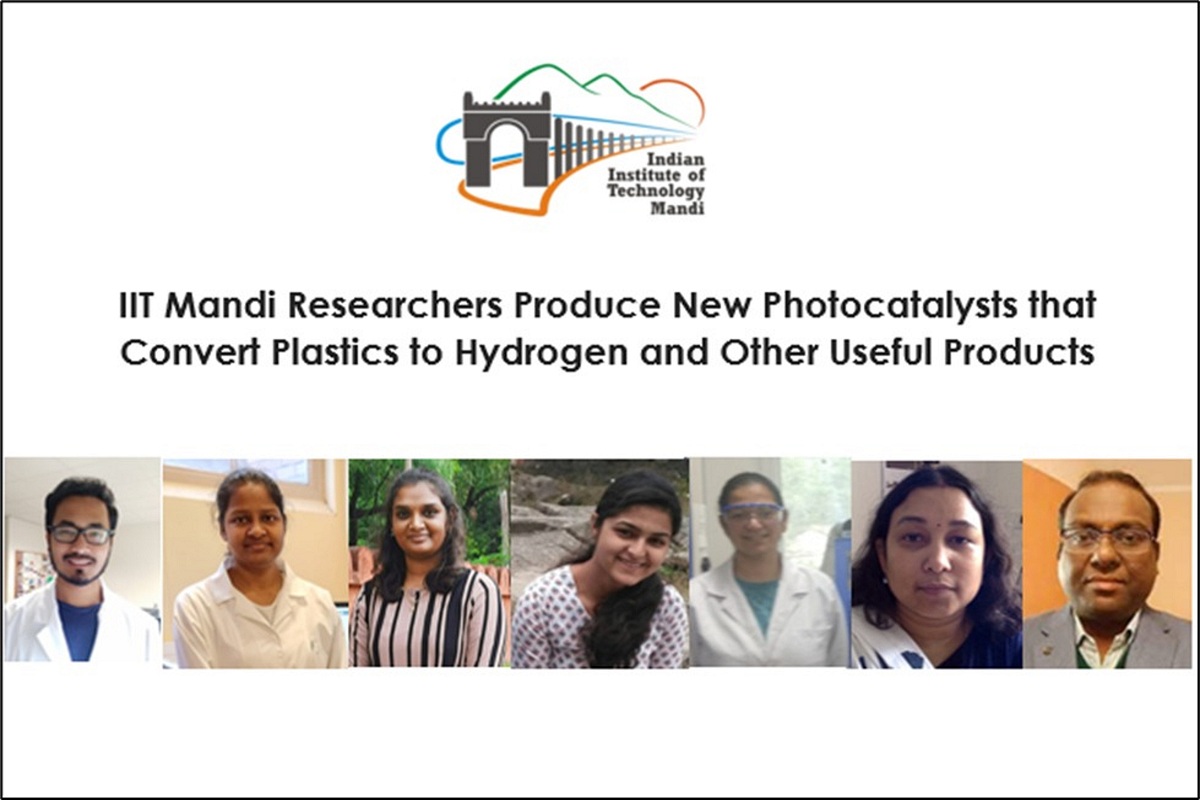Recycling plastic could become easier and even profitable as the researchers at Indian Institute of Technology, Mandi have come up with novel inventions to convert the non-biodegradable product into clean energy.
The researchers have developed a method that can transform plastic into hydrogen when exposed to light. The generation of hydrogen from plastics is particularly useful because gas is considered the most practical non-polluting fuel of the future. Plastics, most of which are derived from petroleum, are not biodegradable i.e. they cannot be easily broken down into harmless products.
It is said that most of the 4.9 billion tonnes of plastics ever produced would end up in landfills, threatening human health and the environment. Fuelled by the need to prevent runaway plastic pollution, IIT Mandi researchers are developing methods that can transform plastic into useful chemicals.
The study was funded by the Scheme for Promotion of Academic and Research Collaboration (SPARC), Ministry of Education. The findings from this work have been recently published in the Journal of Environmental Chemical Engineering. The research was led by Dr Prem Fexil Siril, Professor and Dr Aditi Halder, Associate Professor and co-authored by research scholars, Rituporn Gogoi, Astha Singh, Vedasree Moutam, Lalita Sharma and Kajal Sharma.
Dr Prem Fexil Siril said the ideal path to effective annihilation of plastics is to degrade them into useful chemicals. The generation of hydrogen from plastics is particularly useful because the gas is considered the most practical non-polluting fuel of the future.
The IIT Mandi photocatalyst combines iron oxide in the form of nanoparticles (particles a hundred thousand times smaller than the diameter of a single hair strand), with a conducting polymer-polypyrrole.
The researchers found that combining iron oxide nanoparticles with pyrrole resulted in the formation of a semiconductor-semiconductor heterojunction, which in turn results in strong visible-light-induced photocatalytic activity. Photocatalysts usually need UV light for activation and therefore require special bulbs. The IIT Mandi catalyst can function simply with sunlight.
“We first ascertained the photocatalytic activity of our catalyst by seeing its action on methyl orange, whose colour change from orange to colourless showed the extent to which our catalyst was able to degrade it.
We found there was 100 per cent degradation within four hours when they used a catalyst in which about 4 per cent weight iron oxide was present in the polypyrrole matrix.
While most other photocatalysts that have been developed for hydrogen generation from plastics release the greenhouse gas as a by-product, the IIT Mandi catalyst did not but instead co-produced useful chemicals such as lactic acid, formic acid and acetic acid.
Besides, it can also be used for photoreforming of food waste and other biomass and also for breaking down pollutants in water. The interesting heterojunction properties of nano iron oxide and polypyrrole offer scope for the development of new catalysts for energy production and environmental applications,” he added.










